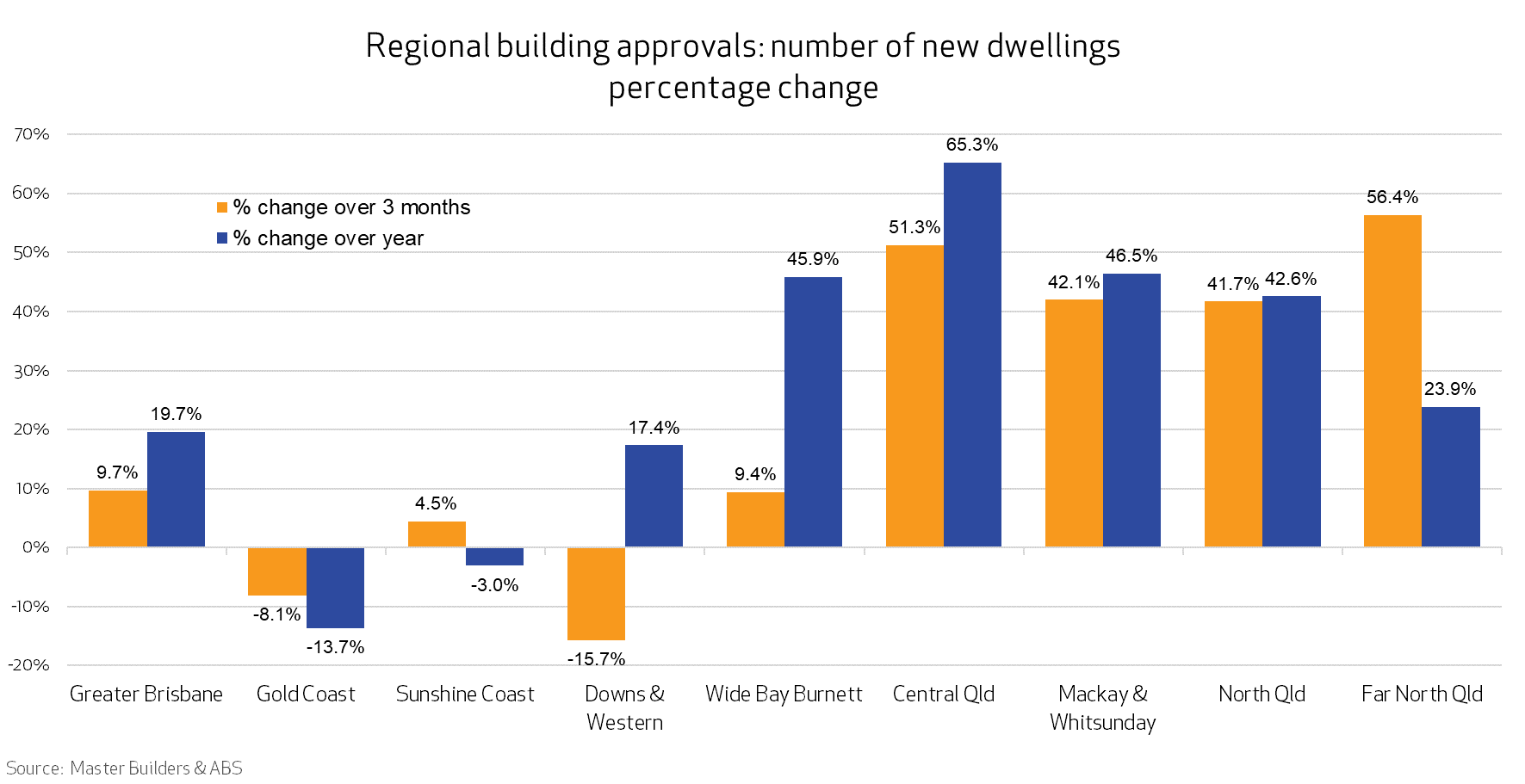12 August 2025
Queensland has recorded another solid quarter for new home approvals, with industry urging continued government action to help turn planned projects into delivered dwellings.
The latest data from the Australian Bureau of Statistics is encouraging, with approvals for both detached houses (+5.7 per cent) and units (+7.3 per cent) having moved up in the three months to June.
A total of 37,924 new dwellings were given the green light across Queensland in the preceding 12 months – up 13.1 per cent on the same period last year and inching closer to the necessary target set by the government of 50,000 new homes and units annually.
The regions also posted strong gains. Far North Queensland led the way (+56.4 per cent) followed by Central Queensland (+51.3 per cent), Mackay & Whitsunday (+42.1 per cent), and North Queensland (+41.7 per cent). Greater Brisbane (+9.7 per cent), Wide Bay Burnett (+9.4 per cent) and the Sunshine Coast (+4.5 per cent) were also positive.
The only exceptions were Downs & Western (Toowoomba) at -15.7 per cent, and Gold Coast at -8.1 per cent. Toowoomba’s previous strong growth in approvals for detached houses is now retreating, while unit approvals remain flat. The dive on the Gold Coast is attributed to the scarcity of affordable land for both units and detached homes.
Master Builders CEO Paul Bidwell said the challenge is to continue to boost residential construction amid increasing competition from the much-needed pipeline of schools, hospitals, infrastructure and 2032 Games projects.
“It’s encouraging to see we are gaining ground, but we’re not out of the woods yet – and there are further levers that can be pulled to bring us closer to those all-important government housing targets,” Mr Bidwell said.
“The state government’s consultation on a mandatory Queensland Housing Code is a welcome step forward. We’ve long called for consistent siting and design rules to help fast-track approvals and get people into homes sooner.
“Replacing outdated provisions with clear, statewide standards – like setbacks, site cover and building height – will make the system easier to navigate. Homes built within the Code’s envelope could avoid costly, time-consuming planning approvals.
“This isn’t about cookie-cutter suburbs. Councils will still manage local character, heritage and environmental concerns. But if done well, the Code could simplify approvals, reduce costs and give greater certainty to everyone involved.”
Master Builders has already welcomed the Queensland Productivity Commission’s Interim Report into construction productivity as justification of industry’s calls to remove the barriers to progress.
“We’re keen to see government implement the recommendations that call for a change to policies where there is no clear net benefit to the community,” Mr Bidwell said.
“This includes making the livable housing and energy efficiency changes in National Construction Code 2022 voluntary; axing Best Practice Industry Conditions for good on state government projects; cutting red tape by scrapping Project Trust Accounts; and supporting modern methods of construction.
“We have a real opportunity here to improve housing supply and affordability across Queensland – and we need to make the most of it.”






